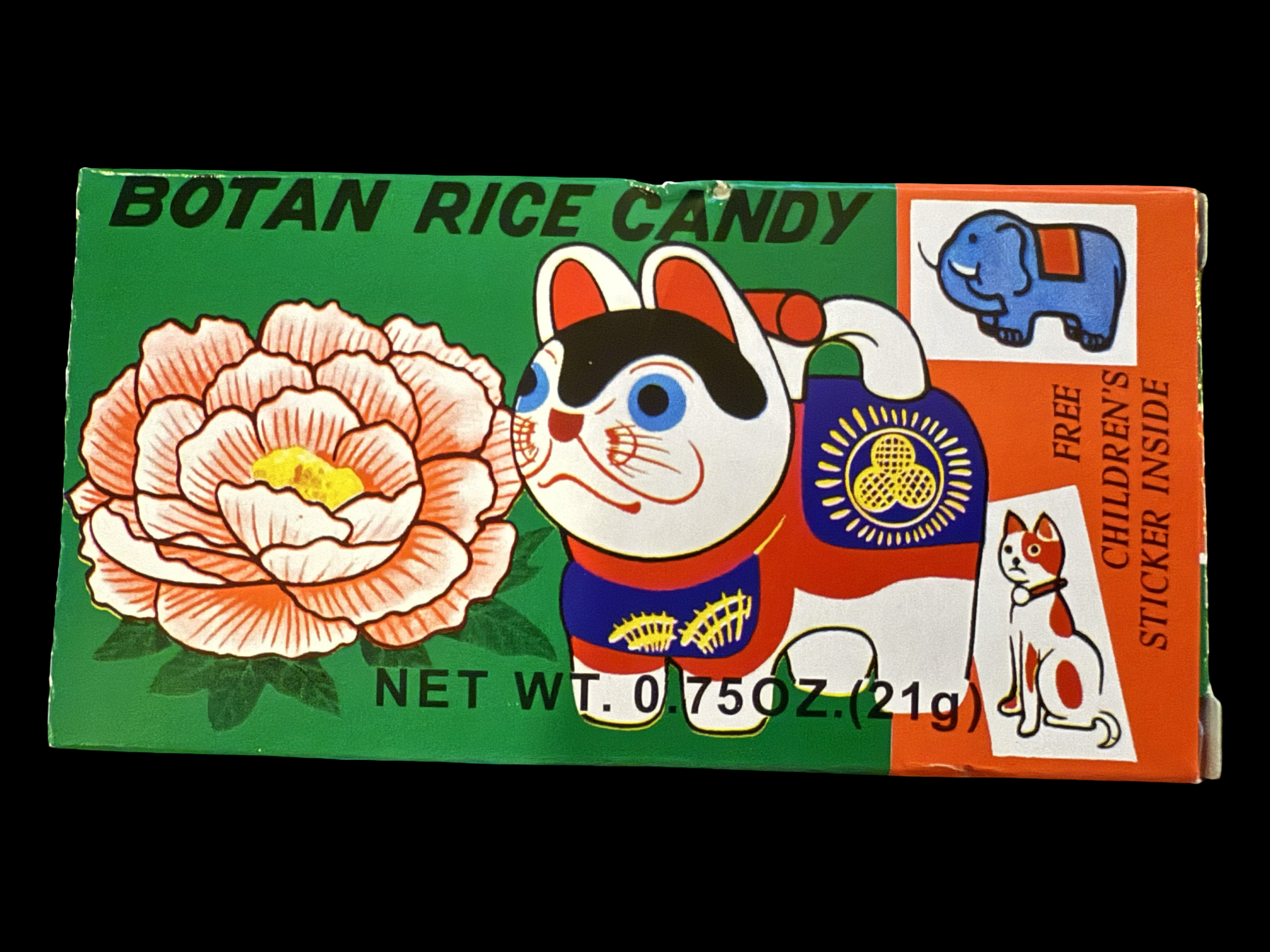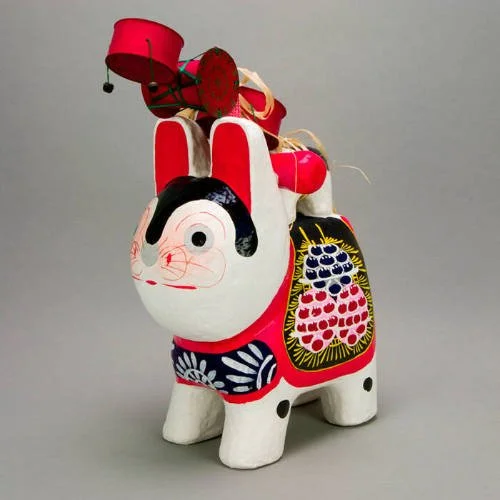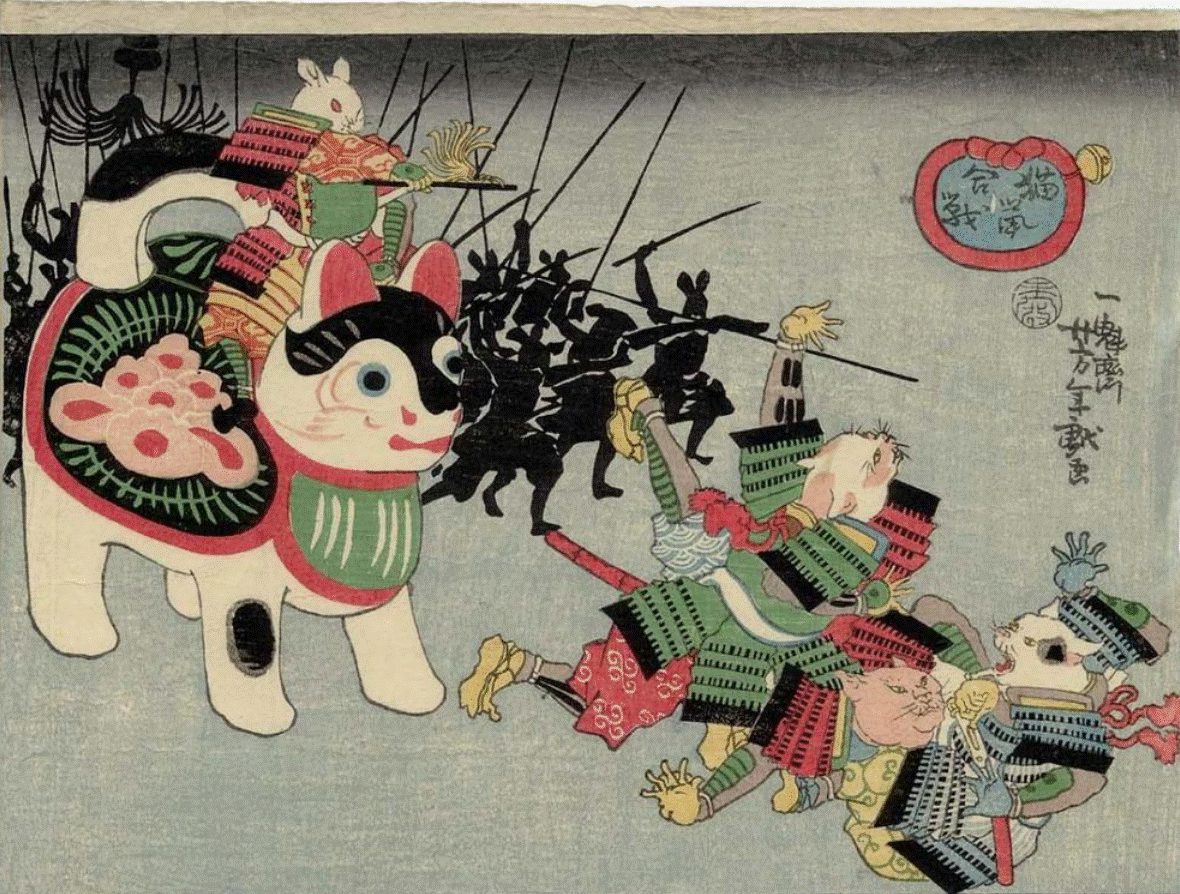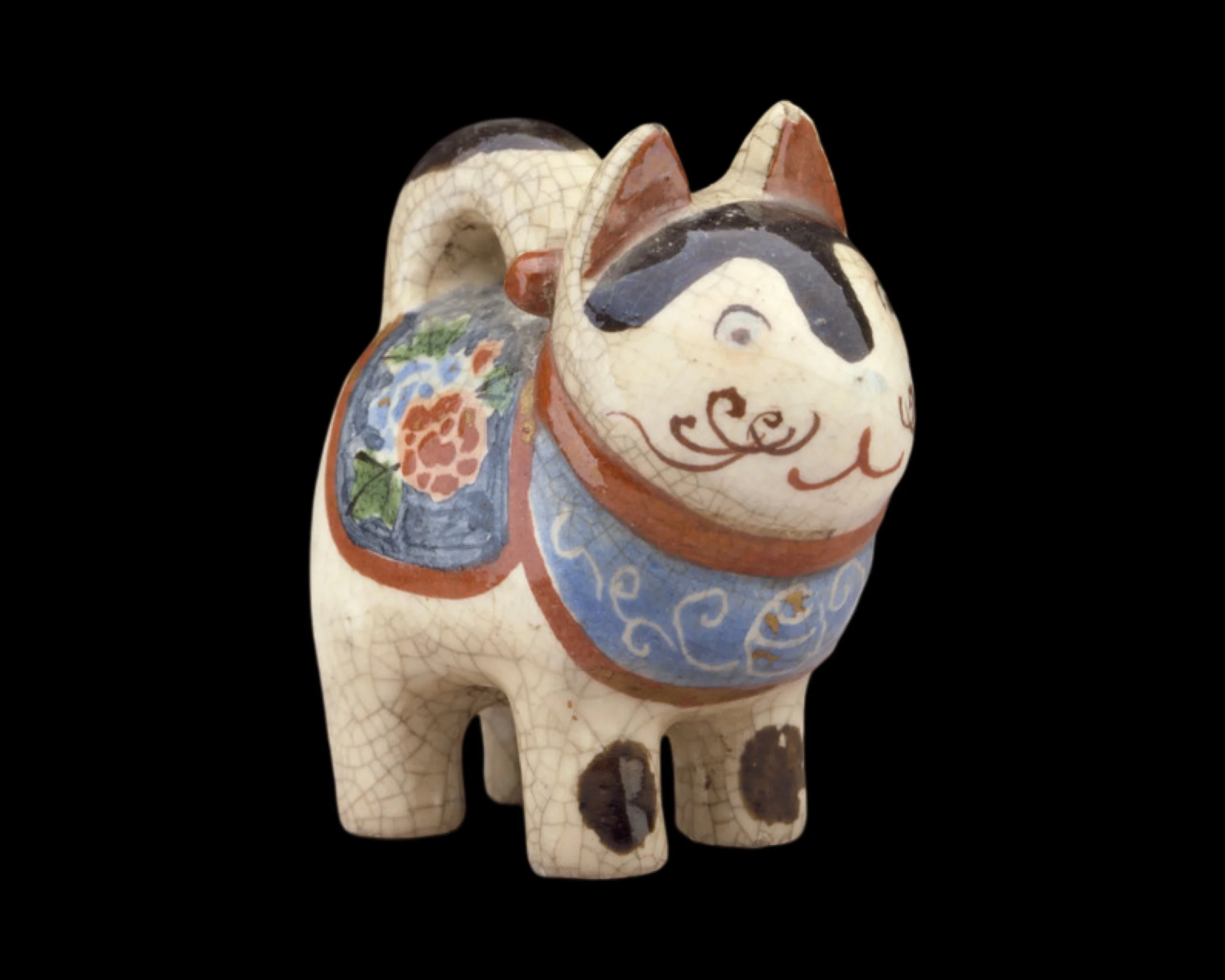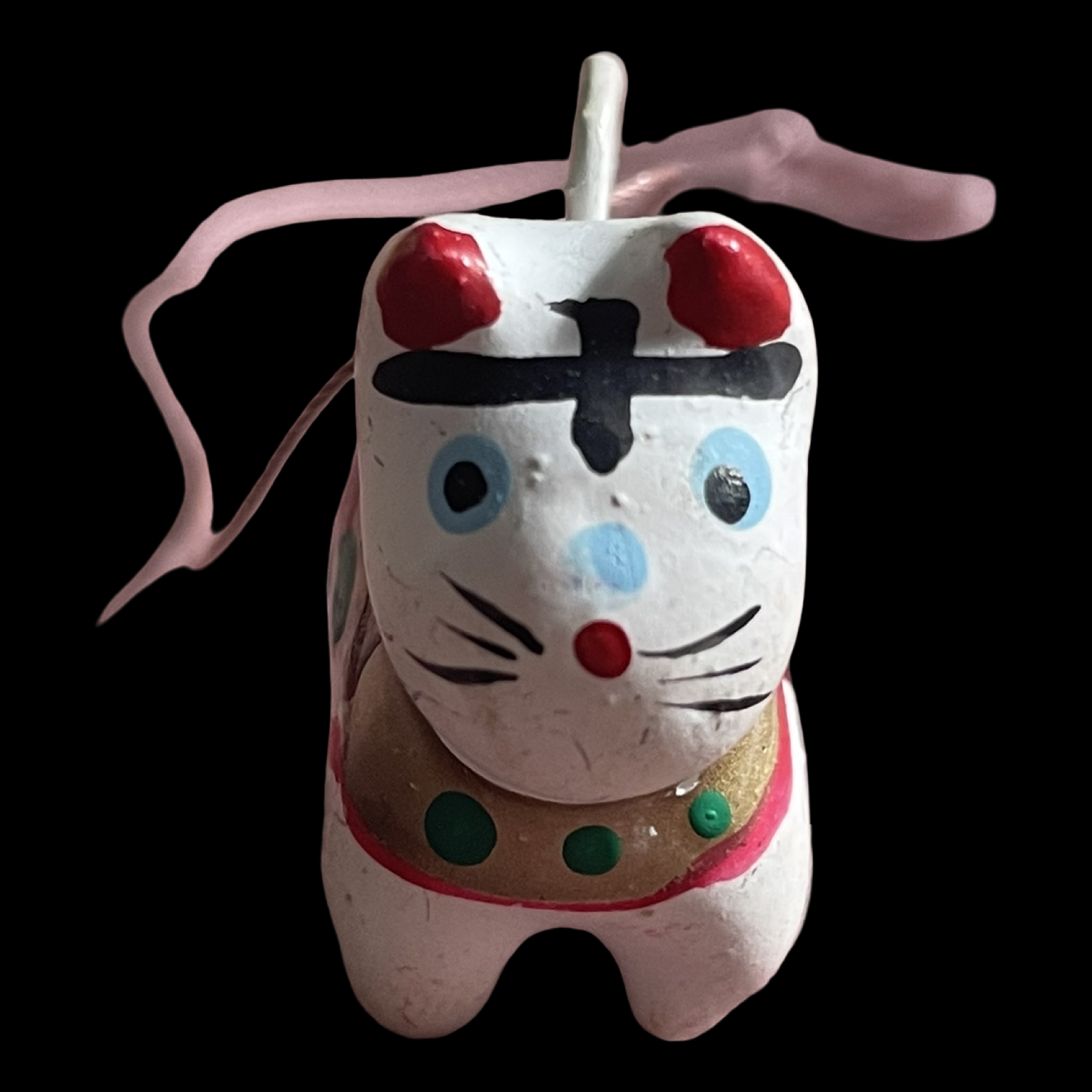Inu Hariko: A Watchdog Made of Papier-Mâché
If you’ve ever wished for a dog that requires no walks, no feeding, and yet promises to guard your family from misfortune, allow The House to introduce Inu Hariko, a papier‑mâché dog that stands as a timeless guardian and harbinger of good fortune.
Maybe you recognize him from the colorful packages of Botan Rice Candy that are a popular Japanese export?
Whimsical Image of Inu Hariko on Box of Botan Rice Candy; House of Good Fortune Collection
Originating in the Edo period, these adorable charms were crafted by layering washi paper over clay or bamboo frames. Once dried, the mold was removed, leaving behind a hollow dog-shaped figure, sturdy enough to stand watch and light enough to hang as a talisman.
The dog was then painted with colorful designs, and sometimes adorned with bells or ribbons for extra charm.
Inu Hariko from the collection of the Museum of International Folk Art
Inu Hariko from the collection of the Mingei Museum
But these pups are more than charming companions. They symbolize protection, fertility, and familial blessings. Historically, they were gifts to pregnant women and newborns, based not only on the belief that dogs give birth easily, but also as amulets intended to shield mother and child from harm. In some regions, pairs of Inu Hariko, male and female, stood vigil in birth chambers or atop cosmetic boxes, warding off evil spirits and safeguarding health.
The decorative patterns and markings painted on their bodies are not mere ornamentation: they were believed to repel malevolent forces and even to cleanse illness — often accompanied by small bamboo baskets for ritual cleansing. The bamboo basket was sometimes placed next to the Inu Hariko as part of a protective altar or offering and could hold grains of rice, salt, or paper charms — all used in Shinto purification rites to ward off evil spirits and misfortune.
Though modern sensibilities have adopted varied styles — from stiffened paper forms to nodding “bobble‑head” versions — the intent remains the same: to carry a blessing into the home. A gentle reminder that through the ebb and flow of life—birth, growth, tribulation—these modest papier‑mâché dogs stand firm.
Inu Hariko with basket, from the collection of the Mingei Museum. The basket's woven, open structure symbolized the filtering out of impurities—spiritual and physical.
Illustration from Unai no tomo: Catalogues of Japanese Toys (1891–1923)

